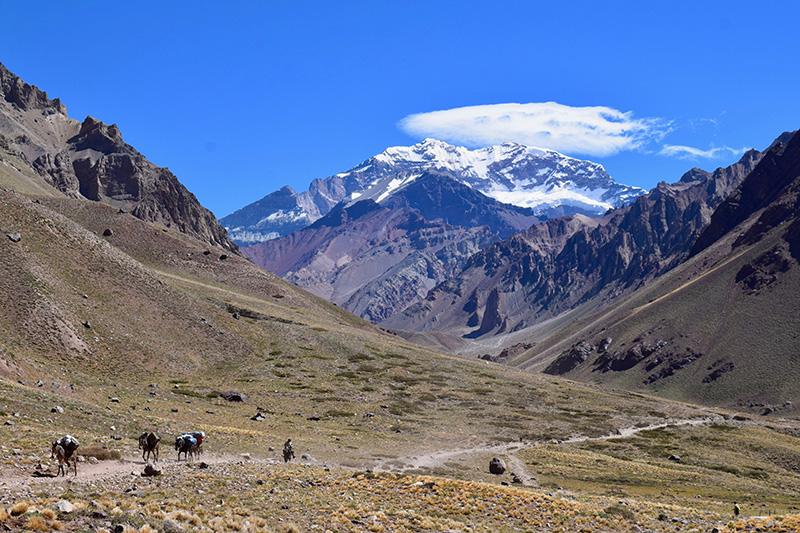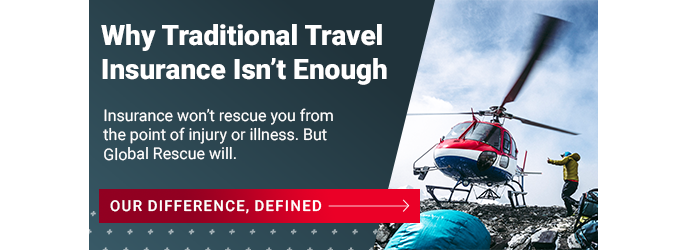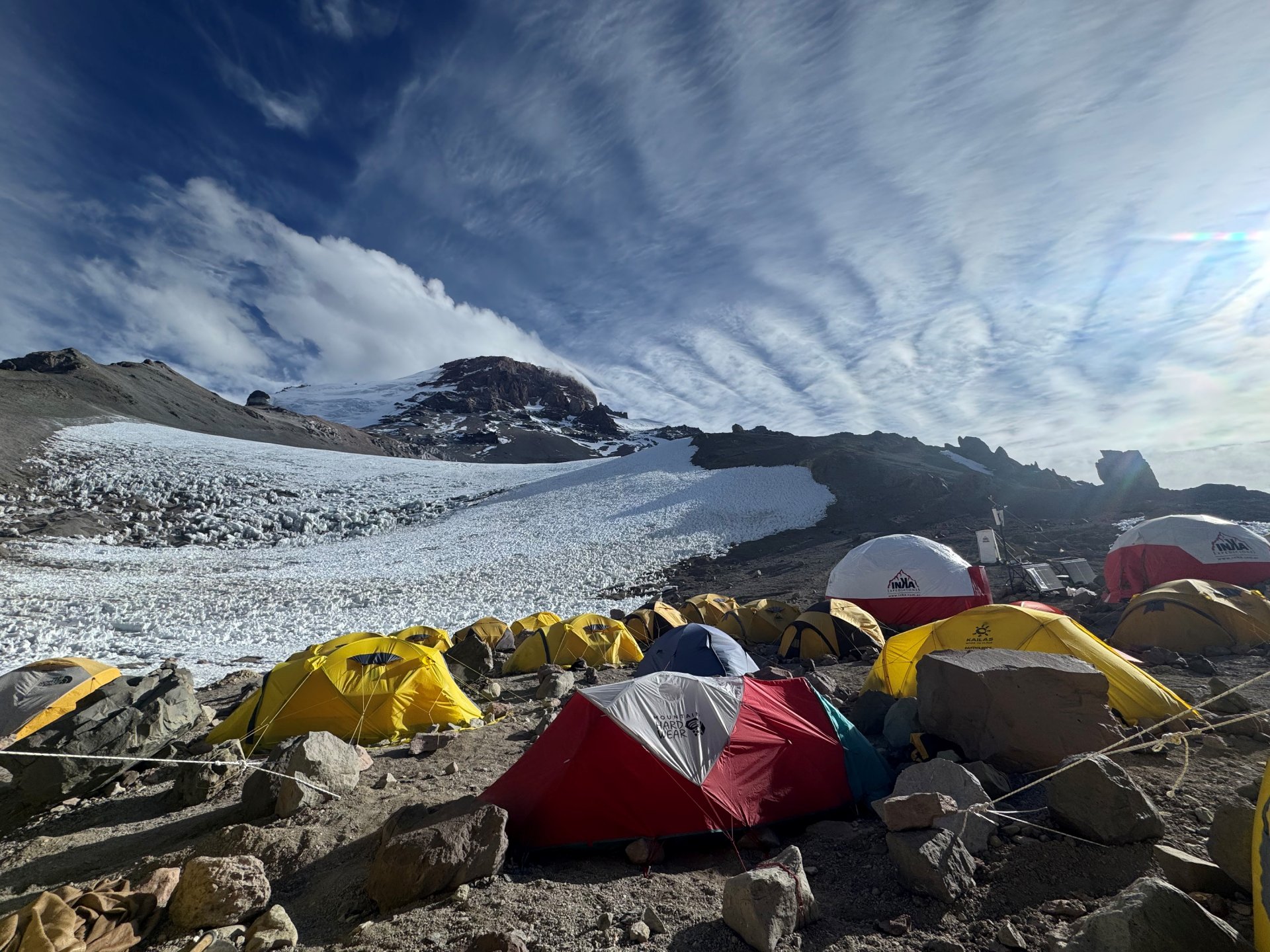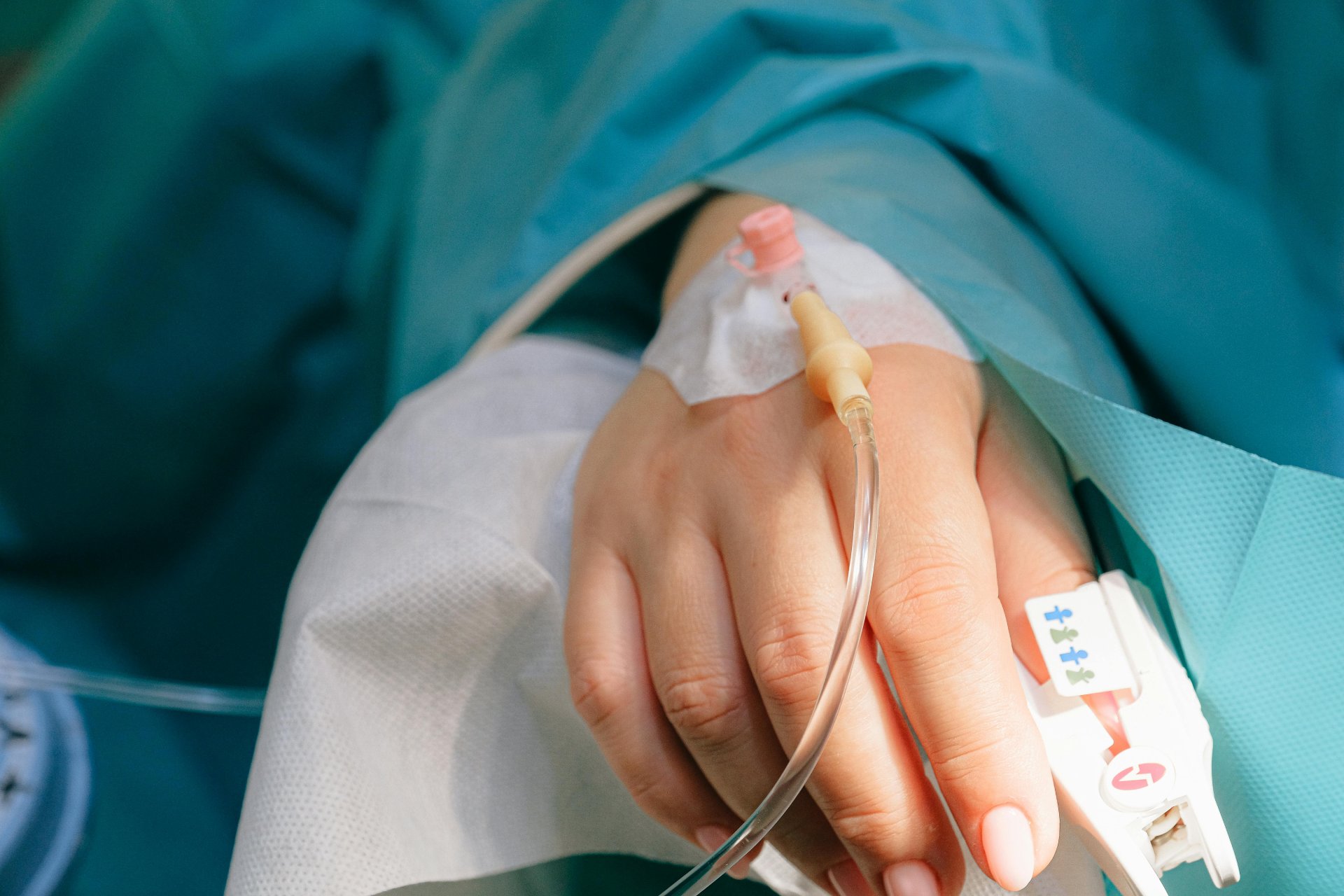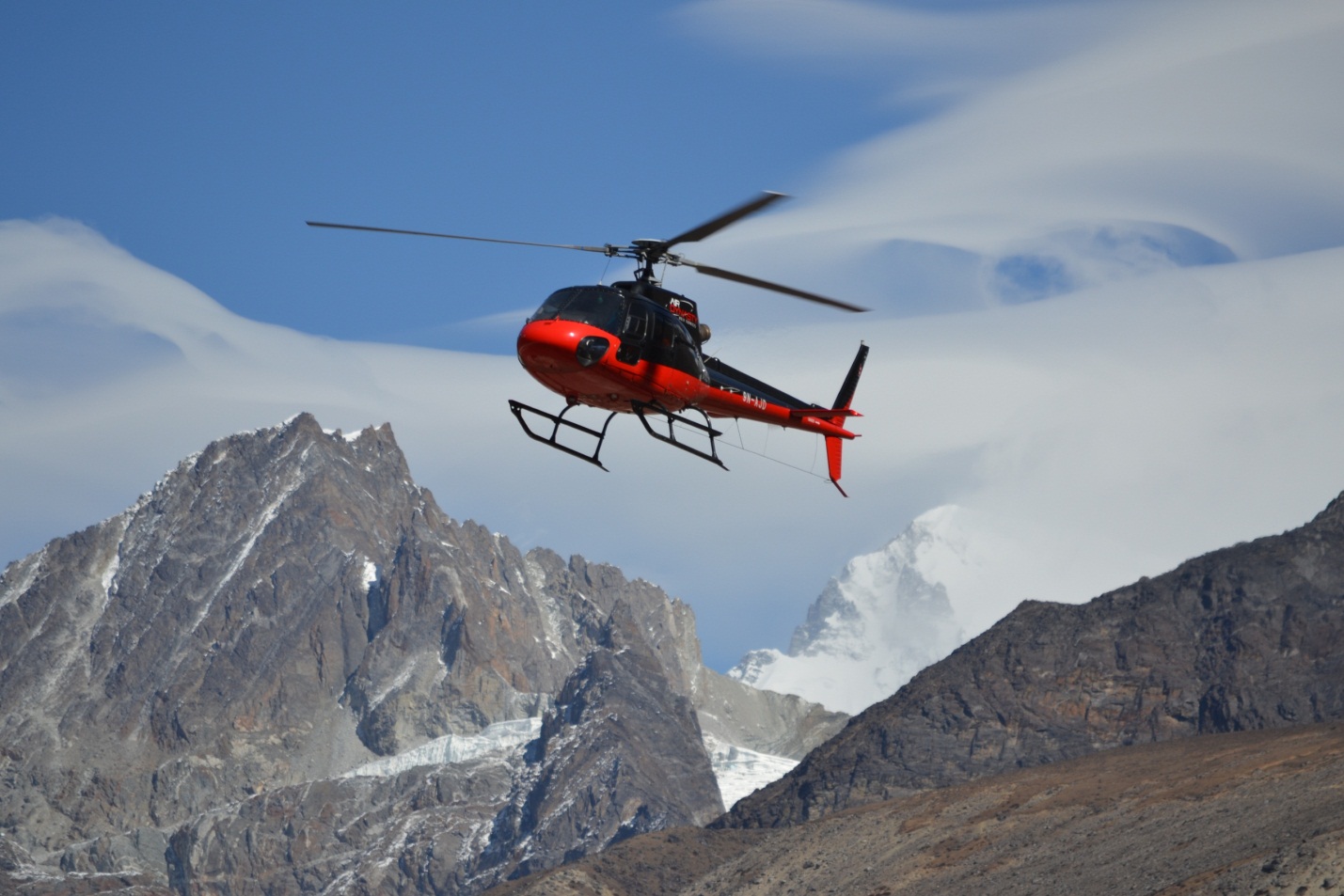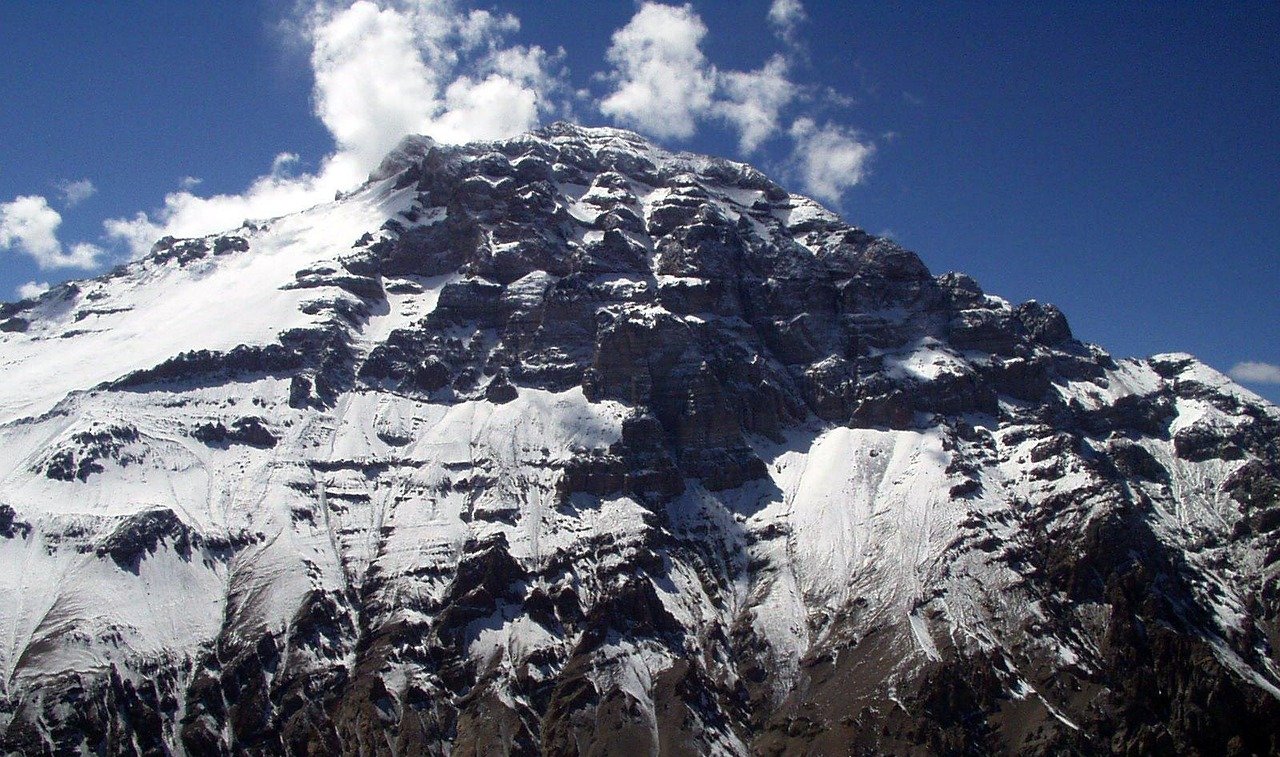Aconcagua is not the highest mountain in the world, but, at 22,837 feet/6,961 meters, it is the tallest peak outside the Himalaya and Karakoram ranges. It is the loftiest mountain on the continent of South America, earning it a place among the Seven Summits. It is not a technical climb but walking in crampons and using an ice ax is necessary. Mountaineering expert Alan Arnette says the mountain is a relatively simple climb in that the approach is short and easy.
Travel writer, military veteran, endurance athlete, chef and Global Rescue member Amanda Burrill had summited Denali, Mount Kilimanjaro and Mount Elbrus before taking on Argentina’s Aconcagua. Despite her experience, the Aconcagua ascent included a major surprise.
The unexpected lack of snow was a shock. “If I couldn’t melt snow to make drinking water and cook food, it was going to really mess up the expedition. I almost felt like I was in an alternate universe — it was so cold and windy, but where’s the damn snow?” she wondered. Burrill found an alternative water source and successfully summited.
Make no mistake, it’s a tall mountain and it holds several challenges for high-climbers, including many from the recent winter season. In a typical 30-day period, Global Rescue executes hundreds of operations in dozens of countries and principalities. But for this special edition of Global Rescue’s Mission Briefs, we are exclusively highlighting a few of the many Aconcagua rescue operations completed in January.
Blindness at High Altitude
“I am at Aconcagua and have suffered partial blindness at my right eye due to prolonged hypoxia at altitude.” That was the emergency message from a Global Rescue member from Aruba. The Global Rescue medical operations team immediately launched an airborne field rescue and ground transport to the closest appropriate medical center. The member was successfully evacuated and was evaluated by an eye specialist who diagnosed a hemorrhage of the right eye. Retinal hemorrhages are a component of high-altitude retinopathy (HAR) in association with altitude illness. Fortunately, incidents of HAR generally resolve spontaneously without adverse visual outcomes. The member was discharged with a tomography report to present to his eye doctor when he returns home.
Nepalese Resident Gets Acute Mountain Sickness
A Nepalese member was diagnosed with severe Acute Mountain Sickness after persistent diarrhea and coughing. His oxygen saturation level was dangerously low at 50%. He was given supplemental oxygen and a dexamethasone injection in advance of a helicopter evacuation. The member was successfully medevaced and later transported to a nearby hospital for further evaluation. The member’s oxygen saturation improved to 97% and he was discharged in stable condition.
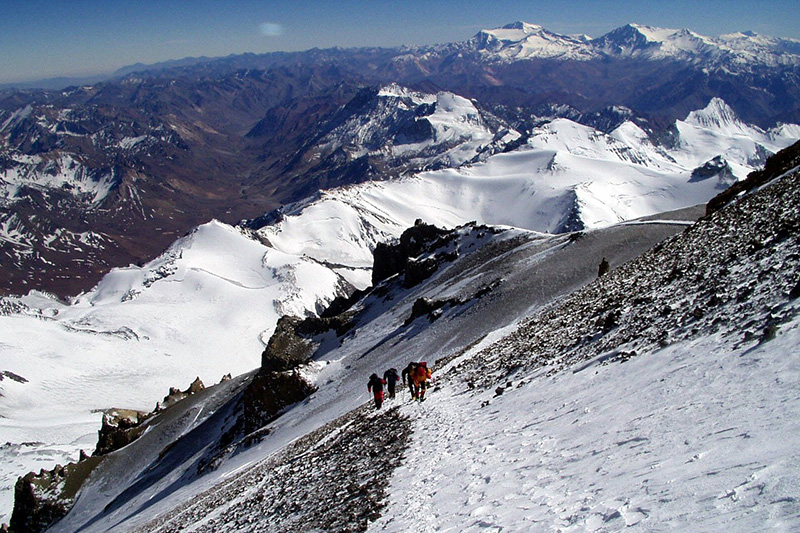
While not technical, Aconcagua is a highly underestimated climb | A 2019 Global Rescue Photo Contest submission
Post-Summit Stroke Symptoms
After summiting Aconcagua, a Salt Lake City member was discovered semi-conscious and demonstrated symptoms similar to stroke — including facial droop, non-normal speech and upper extremity weakness— during his descent. Global Rescue conferred with the member following his helicopter evacuation from the mountain. The member received a brain scan at a nearby medical center and was initially diagnosed with a Transient Ischemic Attack — a temporary period of symptoms similar to those of a stroke that usually lasts a few minutes without permanent damage. The member remained under observation and received a further neurological assessment. He continued routine evaluations and displayed no further symptoms. He was discharged and has been asymptomatic.
Knee Injury During Ascent
A member suffered a knee injury while climbing Mount Aconcagua. He was seen by a base camp physician and was ordered to evacuate. Global Rescue initiated a helicopter air evacuation for the member to the closest appropriate medical center where he was diagnosed with a sprained left knee and was given medication and medical care instructions by the treating physician.
New York Member Suffers HAPE
High Altitude Pulmonary Edema (HAPE) is a potentially life-threatening form of non-cardiogenic pulmonary edema that occurs in otherwise healthy people at altitudes typically above 8,200 feet/2,500 meters. Unfortunately, a New York member needed to evacuate Aconcagua after base camp physicians identified his symptoms as consistent with HAPE. Global Rescue ordered an airborne field rescue via helicopter. The member’s condition improved at the lower altitude and, soon after, he was able to resume his travels.
Fatigue and Shortness of Breath
Suffering from shortness of breath and fatigue, a member from Germany was airlifted off Aconcagua for medical attention related to moderate Acute Mountain Sickness. Following the successful field rescue, the member was transported to a lower altitude. She reported sustained shortness of breath, a sore throat and exhibited an inability to speak in full sentences. She was tested for COVID-19 and rested. After a few days, she recovered and learned her COVID-19 test was negative. The member’s flight was rescheduled and she returned home.
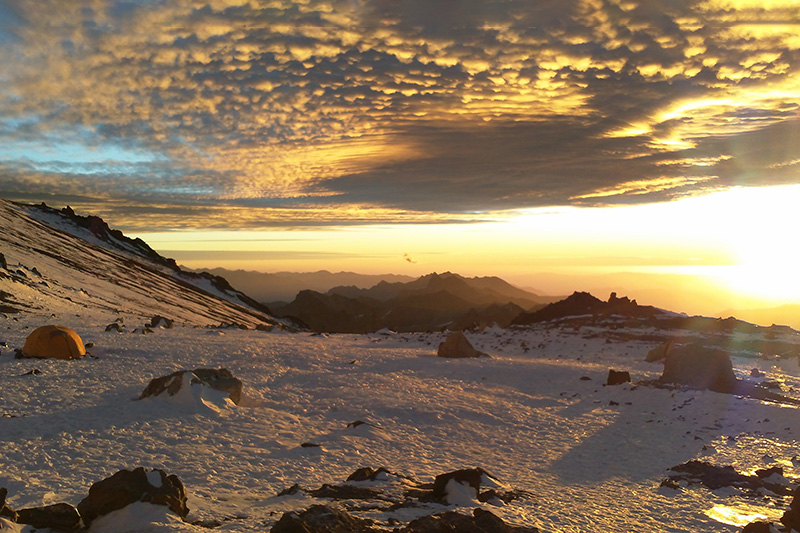
Sunrise on Aconcagua | A 2019 Global Rescue Photo Contest submission
High Altitude Illness for a Canadian Member
Outfitters leading an Aconcagua summit expedition discovered a Canadian team member was experiencing symptoms consistent with high-altitude sickness. Physicians at the base camp diagnosed the member with HAPE and moderate gastrointestinal pain. Global Rescue initiated an airborne field rescue and ground transport to a lower altitude. Following the evacuation, the member showed significant improvement. He was evaluated at a nearby hospital and received a prescription for antibiotics for diarrhea. He was discharged in stable condition with orders to rest before returning to Canada.
An Arizona and Florida Climber Grounded by HAPE
Two Global Rescue members, one from Arizona and the other from Florida, suffered symptoms of High Altitude Pulmonary Edema (HAPE) and were immediately recommended for an airborne field rescue. The two members were successfully transported off the mountain to a lower altitude and evaluated by a local physician. Following a day of rest and recovery, the members were feeling well and set to return to the U.S.
COVID-19 Field Rescue
A Global Rescue member from Brazil suffering from shortness of breath and a mild cough registered a blood-oxygen saturation level of 45%, well below normal. She also tested positive for COVID-19 and needed immediate evacuation. Global Rescue ordered a helicopter field rescue and ground transportation to a nearby hospital. The member was evaluated, prescribed medications and released from the hospital to quarantine at her hotel. Global Rescue monitored her condition while she isolated. Following a negative COVID-19 test result and no symptoms, the member was able to return home.
Texas Climber Gets HAPE
A Texas climber needed a helicopter evacuation off Aconcagua after being diagnosed with High Altitude Pulmonary Edema (HAPE). The member was initially evaluated by a base camp physician who noted some fluid in the member’s lungs and recorded a blood-oxygen saturation level of 65%. Global Rescue launched an airborne field rescue for the member and ground transport to a nearby hospital. The member was given an injection of dexamethasone and diphenhydramine. Following significant improvement and registering a blood-oxygen saturation level of 96%, the member was discharged and advised to avoid high-altitude climbing for the next three months.

